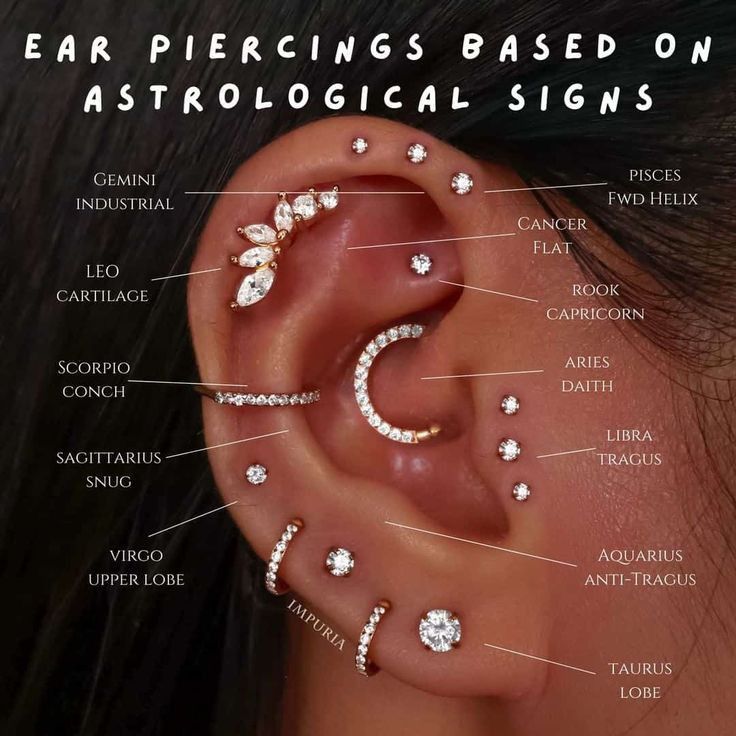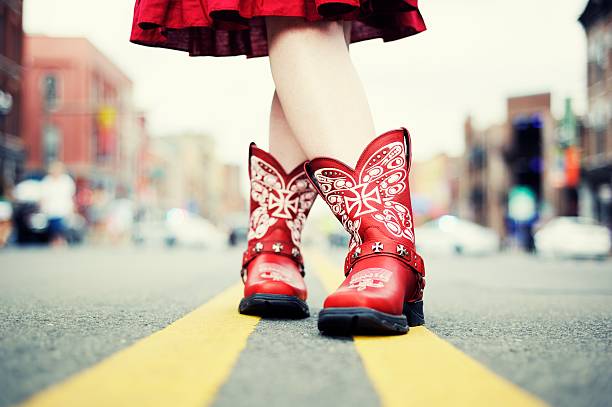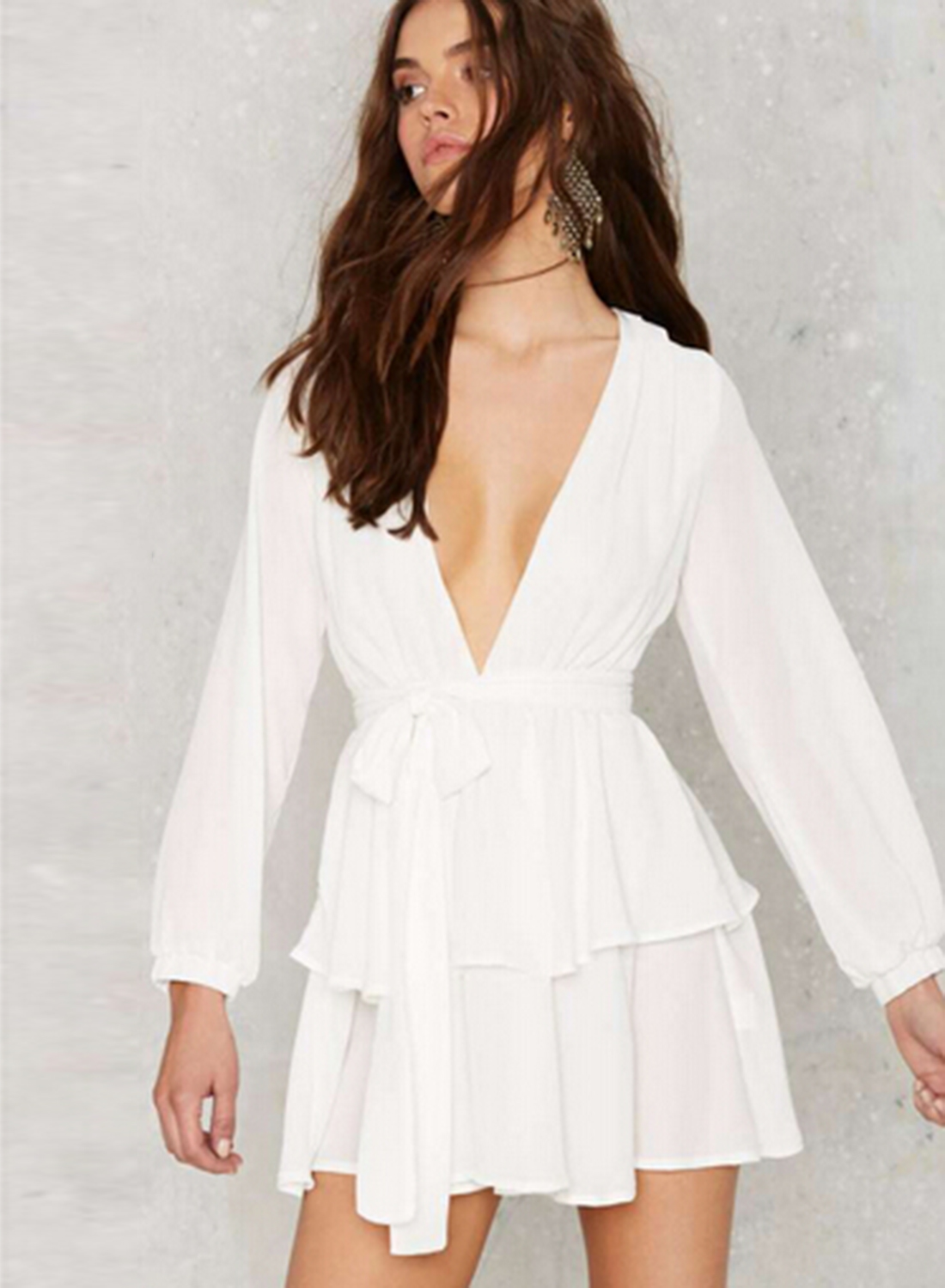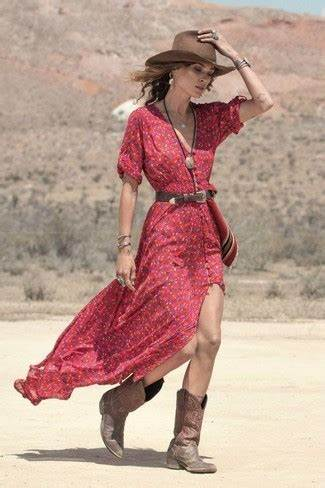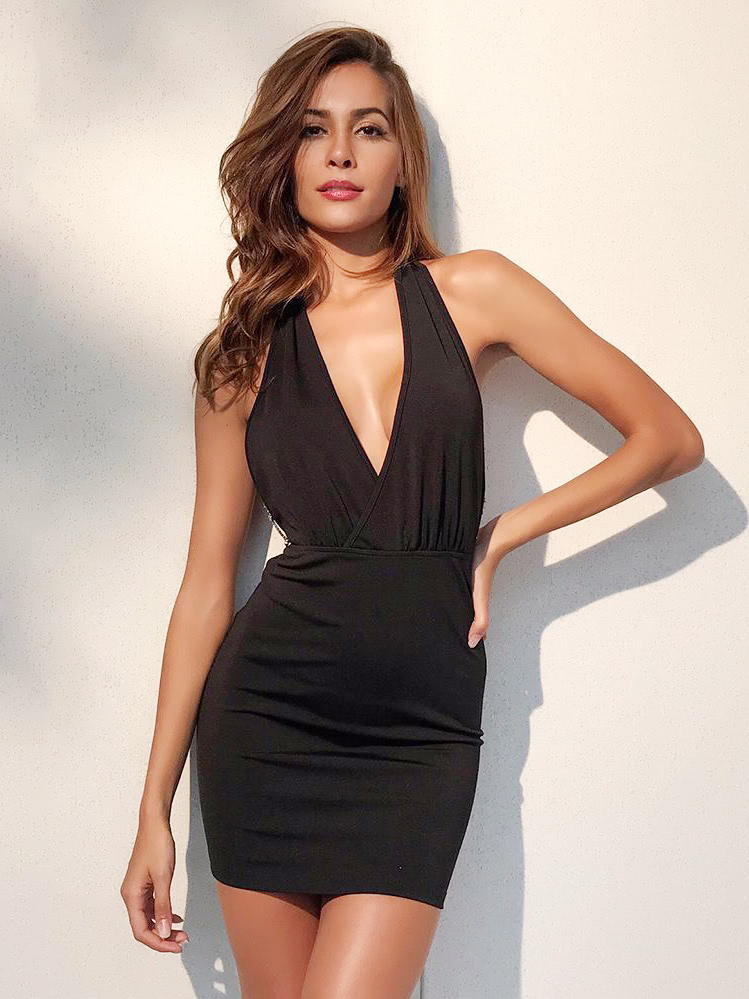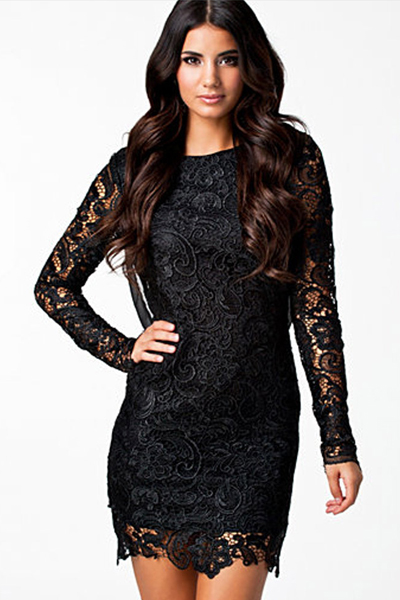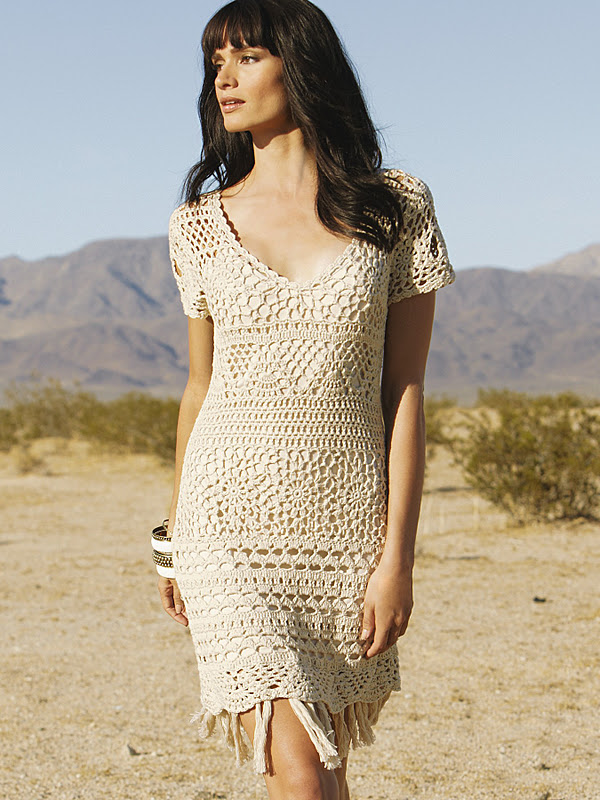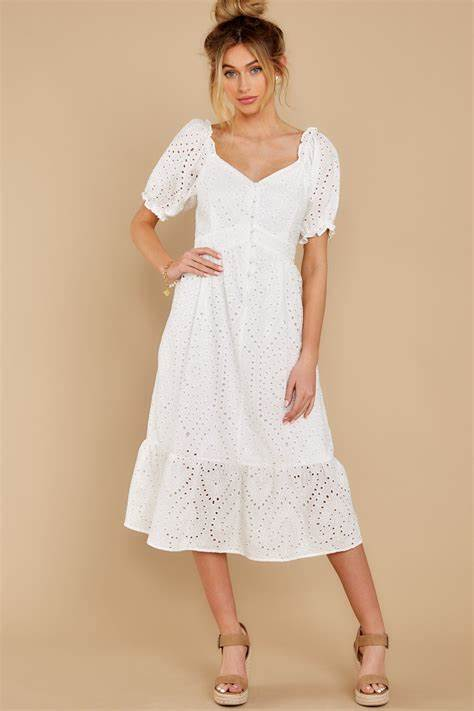Earrings are an indispensable accessory for our lovely ladies, aren’t they? They not only enhance the beauty of the face but also express the personality and style of a woman. Each piercing is a unique story of individuality. Join us to discover the allure of different ear piercing names, and select the most suitable and beautiful style for you.. Explore and be amazed!
Do ear piercings hurt?
Yes, ear piercings can hurt. The amount of pain you experience will depend on a few factors, including the location of the piercing, your pain tolerance, and the skill of the piercer. Typically, it involves a brief, intense sensation—described as a quick pinch or sting as the needle passes through the ear tissue. Despite the momentary discomfort, many find the visual outcome well worth it. Factors like anxiety or fear can influence pain perception, and the actual sensation varies from person to person. Stay tuned for more insights!
What are the different types of ear piercings?

Lobe piercing

For many people, the initial piercing choice is the standard lobe placement, appreciated for its minimal pain. What sets it apart is its simple healing process, avoiding cartilage. This adaptable and low-maintenance piercing opens doors to variations like upper-lobe placements, just above the first one. Healing Time for lobe piercing: 4 to 6 weeks.
Upper Lobe Piercing

An upper lobe piercing is positioned a bit higher on the earlobe, allowing for approximately 4 piercings depending on your ear size. Despite the elevation, since it’s still a fleshy area, the healing time remains the same as the regular lobe piercing mentioned earlier. Healing Time for upper lobe piercing: 4 to 6 weeks.
Transverse Lobe Piercing
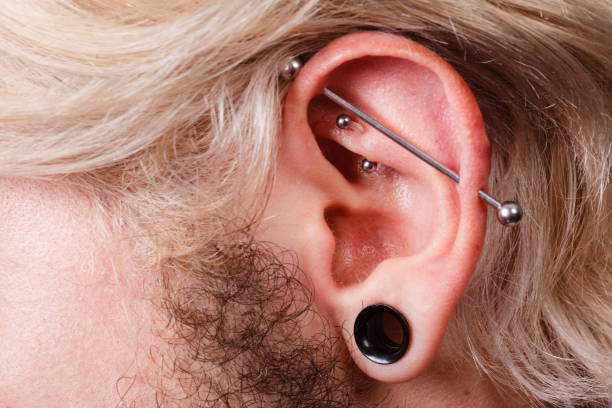
Imagine a stylish transformation of your earlobe—instead of the usual front-to-back piercing, a transverse lobe piercing involves threading a barbell from side to side. This unique approach results in a distinctive look, with little balls on either side of your earlobe. It’s a cool way to switch up the traditional lobe placement and add a touch of individuality to your style. Healing Time for transverse lobe piercing: 2 to 3 months, sometimes up to 10 months.
Tragus Piercing

When opting for a tragus piercing, the target is the small piece of cartilage partially covering your ear canal. Whether you go for a stylish stud or a trendy hoop, the tragus placement provides a unique look. Keep in mind that this piercing may involve a bit more discomfort than a lobe piercing due to the piercer navigating through cartilage. Healing Time for tragus piercing: 3 to 6 months, sometimes up to 8 months.
Anti-Tragus Piercing

The anti-tragus, the ridge above your earlobe, is the target for these piercings, typically adorned with hoops or barbells. Confirm with your piercer about available space, especially if you have stretched lobes or wear other earrings. Anti-tragus piercings might bring more discomfort due to thicker cartilage. Keep it clean and refrain from sleeping on the newly pierced side. Healing Time for anti-tragus piercing: 3 to 6 months.
Orbital Piercing

An orbital piercing involves creating two holes in the same part of the ear, allowing for a hoop-shaped piece of jewelry to pass through both. This versatile piercing can be done in various locations, but it’s often seen in the helix or the lobe. Explore the possibilities and express your style with this unique and trendy piercing. Healing Time for Orbital Piercing: 6 to 8 weeks
Snug Piercing
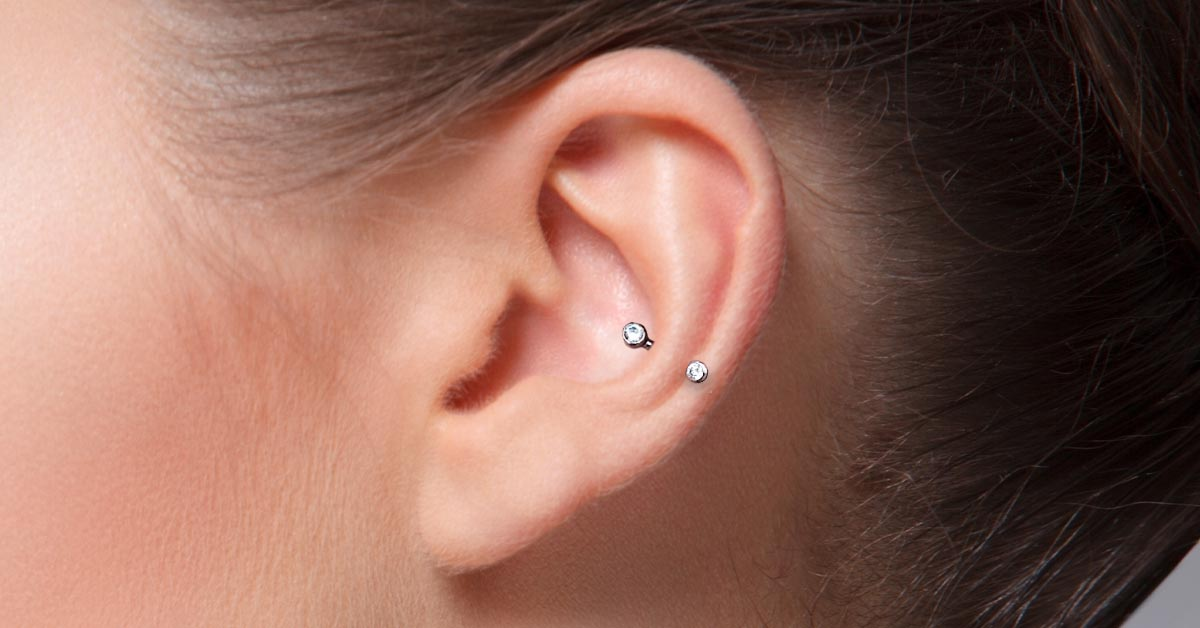
Snug piercings are horizontal and located above the anti-tragus region, with visible entry and exit points from the front of the ear. However, not every ear is suitable for a snug piercing, as the available space in that area varies. It’s crucial to consult with your piercer to determine feasibility. Healing Time for snug piercing: up to 6 months
Rook Piercing

A rook piercing passes through the cartilage in the upper part of your ear, adjacent to the daith placement. It targets the ridge between the outer and inner sections of your upper ear. Healing Time for rook piercing: 10 months to a year.
Conch Piercing

A conch piercing, whether in the upper or lower region, involves piercing through a significant amount of cartilage, causing more discomfort than other piercings. Healing usually takes six to nine months, with a need for at least two daily cleaning sessions. Healing Time for conch piercing: from 3 to 9 months.
Daith Piercing
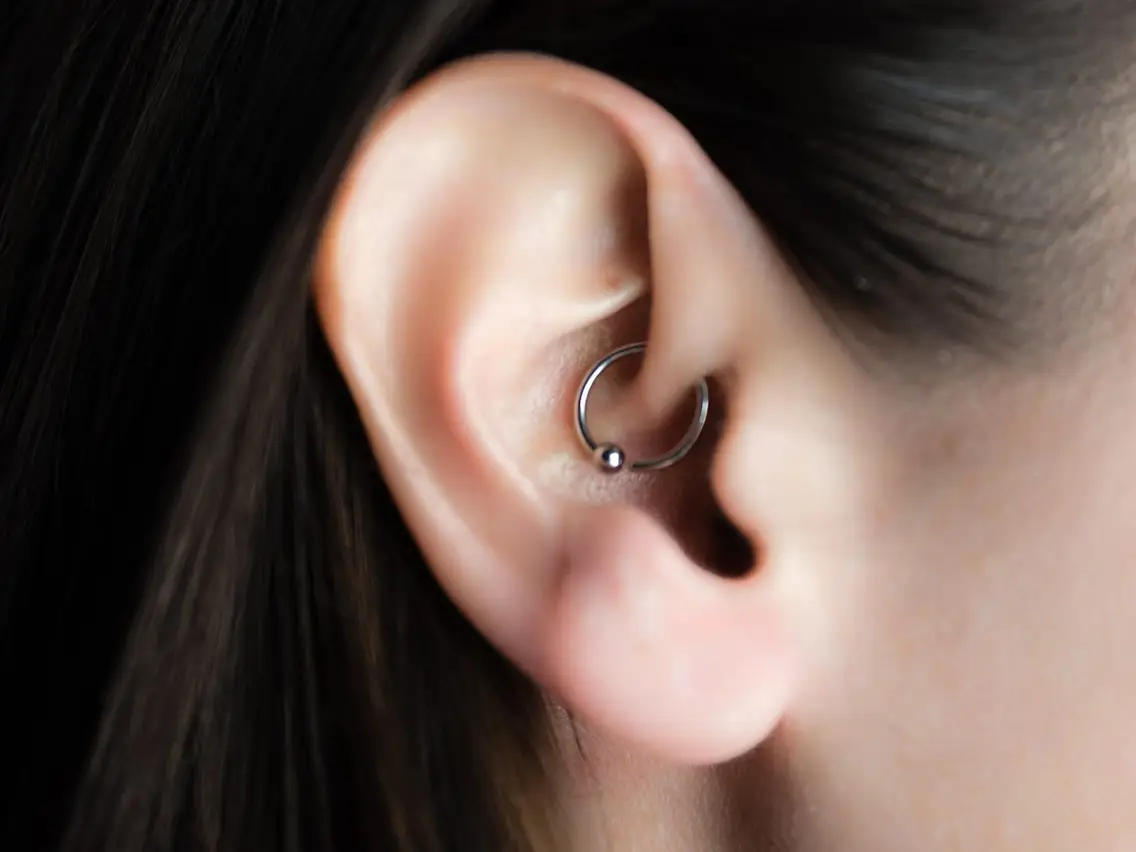
Explore the world of daith piercings, placed on the cartilage inside your ear and often adorned with a stylish hoop. Surprisingly, some people choose daith piercings in the hope of alleviating migraine symptoms. Healing Time for daith piercing: up to 9 months.
Auricle

Situated between the lobe and the helix on the outer part of the ear, the auricle, also known as a “mid-helix” piercing, graces the ear about halfway up, aligning with the tragus. Ideal for hoops and studs, this piercing involves thinner cartilage in the area, resulting in relatively lower pain during the process. Healing time for auricle: 3 to 9 months
Helix Piercing

Helix piercing involves creating a hole in the upper ear cartilage, usually along the outer rim. It offers versatility with different placements and jewelry choices like studs, hoops, or cartilage cuffs. The process uses a small needle, and healing times vary but commonly take a few months. Healing Time for helix piercing: 3 to 6 months.
Forward Helix Piercing
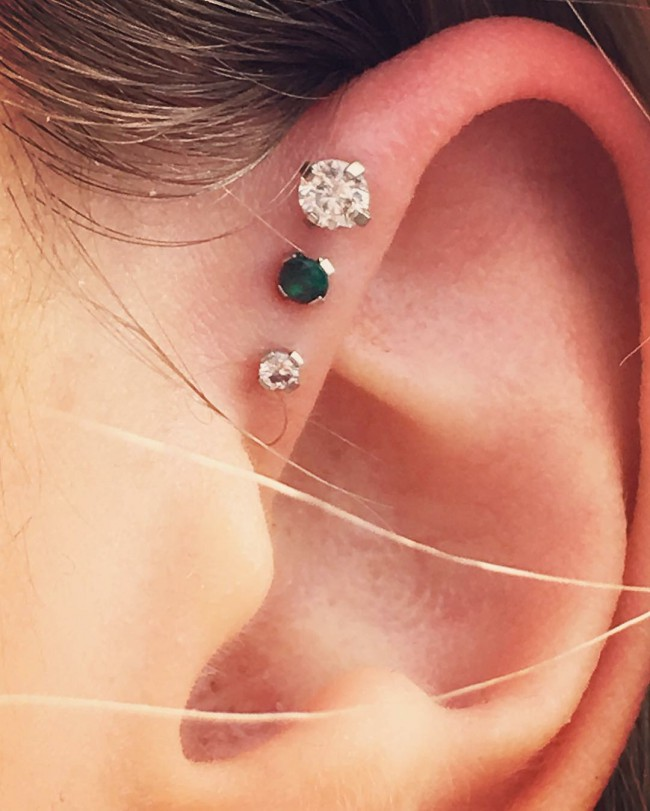
A forward helix piercing is positioned on the upper and outer cartilage near your face, with a healing time of approximately three to nine months. Once healed, maintenance is relatively straightforward. Healing Time for forward helix piercing: 3 months, sometimes up to 6 months.
Industrial Piercing

An industrial piercing involves connecting two piercings with a barbell, often placed on the upper cartilage of the ear. The process may be more intense as it requires two piercings instead of one. Healing Time for industrial piercing: 6 to 9 months.
Ear piercings pain chart
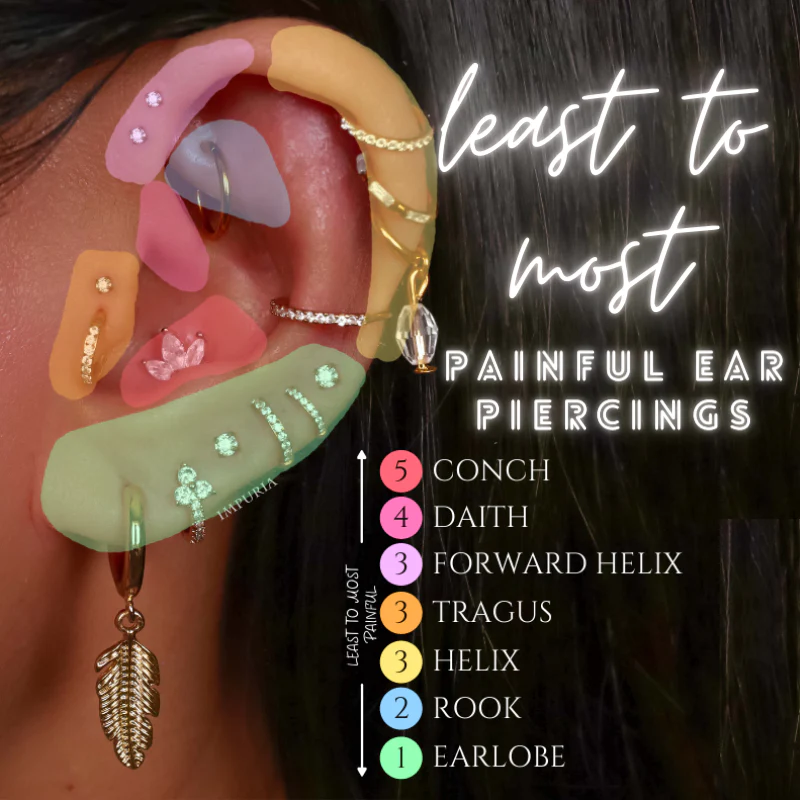
Among the various types of piercings, the lobe piercing stands out as one of the most common and least painful. Utilizing a hollow needle, this procedure is typically performed through the earlobe, causing a sensation often likened to a sharp prick or pinch.
Contrastingly, cartilage piercings, such as orbital, forward helix, daith, conch, and anti-tragus, are typically more painful, tend to be more uncomfortable due to the thickness and lower sensitivity of the cartilage. The pain associated with cartilage piercings is often described as a sharp, stabbing sensation.
Although the discomfort from an ear piercing is brief, lasting only a few seconds, residual sensations may linger for a few days. It’s not uncommon to experience redness, swelling, and tenderness around the piercing site during the initial stages of healing.
If you are worried about the pain of a particular ear piercing, talk to your piercer. They can offer advice and information to manage pain and ensure a smooth experience.
Infection from Ear Piercing: What are the causes?

Infection from ear piercing is a common complication that can occur anywhere on the ear, including the earlobe, ear rim, and cartilage. Infections can result from various factors. Firstly, bacterial invasion stands out as the most common cause of infection from ear piercing. If the piercing needle is not adequately sterilized, bacteria can enter the wound, whether due to the unhygienic hands of the person performing the piercing or if the pierced individual fails to maintain proper hygiene of the wound. The structure of the skin and tissue in the ear is another factor. The skin and tissue in the ear can harbor numerous bacteria, especially in individuals with oily or sensitive skin, putting them at a higher risk of infection from ear piercing. Additionally, a weakened immune system, such as in individuals with diabetes or HIV, further elevates the risk of infection.
How To Clean Ear Piercing?

Ensuring your ear piercing stays clean is a straightforward yet vital process that significantly contributes to preventing infection and ensuring proper healing. There are two commonly used types of ear piercing cleaning solutions: saline solution and specialized ear piercing cleaning solution.
Here’s a step-by-step guide to ensure effective and safe cleaning:
- Dip the gauze pad or cotton ball into the saline solution or sterile saline, squeezing gently to remove excess.
- Clean the ear piercing: Gently wipe the ear piercing with the soaked gauze pad or cotton ball, ensuring you clean both the front and back of the piercing.
- Rinse with water: After cleaning the ear piercing with saline solution or sterile saline, rinse it with water to remove any residue.
Conclusion
The world of ear piercings is a captivating tapestry of self-expression, where each type tells a unique story of individuality. From the classic elegance of lobe piercings to the intricate beauty of daith and beyond, the possibilities are as diverse as they are stylish. Whether you’re a seasoned piercing enthusiast or a newcomer, remember to choose reputable professionals, read reviews, and select a trustworthy studio for a safe and stylish journey into the art of ear piercings. Your ears, your canvas—explore, adorn, and embrace the beauty of self-expression!
FAQs
- Which ear piercing is most beautiful?
Beauty is subjective, but many people find standard helix piercings on the upper side of the outer ear to be particularly attractive.
- What’s the most painful ear piercing?
Industrial piercings are often considered the most painful ear piercings, as they involve two piercings connected by a barbell, resulting in a more intense sensation.
- What is the rarest ear piercing?
The snug piercing, also known as the anti-helix, is considered one of the rarest ear piercings due to its location and the perceived level of pain associated with it.
- Do piercings hurt more than tattoos?
In general, piercings tend to hurt less at the moment but have a longer healing time, while tattoos may hurt more during the process but have a shorter healing period. The perception of pain varies among individuals.
- Which ear piercings are hardest to heal?
Rook piercings are situated in the cartilage at the top of the inner ear, passing through a thick section that can make it more painful and challenging to heal compared to other ear spots.

